Hetland
Contributor
I met up with the captain and crew of Niuhi Dive Charters for a Sunday morning trip to the Avocet, which rests in 120 feet of water, about 25 miles South of Pensacola Pass. We found pleasantly cool weather, and a mild chop on the way out. The boat had been booked by experienced divers (one diving a rebreather), who also happened to be regulars on the boat, so everyone was comfortable and relaxed.
The Avocet is a 247 foot long, 40 foot wide clamshell dredge intentionally sank in May of 1991. There's about 30 feet of vertical relief provided by the upper deck towards the stern, but much of the wreck is only 10 to 15 feet above the sand. There's a notable amount of wreckage to the port amidship, and a crack that spans the width of the hull towards the bow. The crack is about 15 feet wide, and provides an easy escape route for the smarter fish that call the wreck home. Elsewhere you'll find missing deck plates and bulkheads that offer entrance, or inspection ports into the interiors of the vessel.
Once on site, I was saddened to find murky, green water, but after we were tied in, the divemaster reported that 100 foot visibility waited for us below the surface. Once I splashed, I found turbid water, and a swift surface current. These conditions lasted for 30 feet. Once deeper, the current reversed polarity, and the water took on a deep blue color.
As I descended, I could make out the lines of the ship and the susurrus of the billion reef creatures that crusted the hull. I descended further, and noticed the feathery, white-tipped fins of a dozen lionfish.
Out of habit, I checked the tie-in, and found it secure. I then glanced about in search of fish to photograph. I saw damsels, three varieties of butterflyfish, all in pairs, queen and blue angelfish, a small eel, gag grouper, coney, soapfish, spanish hogfish, mangrove snapper, red snapper, and several schools of small baitfish.
The current had dropped off, but was still significant, so I moved upstream at a careful pace, and noted the locations of the lionfish for my second dive. I found the bottom temperature to be 67 degrees, and it felt colder than my previous dives at this location a few weeks before. After I took a few photos, I worked my way back downstream to the ascent line, and made a slow ascent, then safety stop before reboarding.
On deck, I was greeted with fresh-cut pineapple slices and sandwiches. I don't usually eat on boat trips, but I've found it impossible to turn down fresh pineapple, so I had a few slices, and washed it down with a cold water.
After an hour on the surface, I returned with my polespear and lionfish bag. The seas had laid down, and the current on the surface had dropped down a bit. The deeper current had all but disappeared. I managed to poke a few lionfish, and landed three, which carefully went into my bag. I'll confess that there's a learning curve to retaining lionfish without getting stuck. It's certainly easier to kill a lionfish than it is to collect them! I'm used to putting my hands on critters I plan to take home with me, and it's pretty hard to handle a live fish without touching it. I ended up braining two of my fish, but the third one was wrestled into the bag without being dispatched. I couldn't manage to get my short knife past his fins. I'll probably try a shorter spear with a narrow paralyzer tip on my next attempt.
The trip back to Pensacola was fast and pleasant. The weather was perfect, and the seas had laid down to almost nothing.
As always, the captain and crew of the Niuhi were first rate. I'm looking forward to my next offshore dives with them, but I should have new camera gear coming in this week, so I'll probably stick to shore dives this weekend so I can work out the kinks before going deep again.
---------- Post added May 13th, 2013 at 11:48 PM ----------
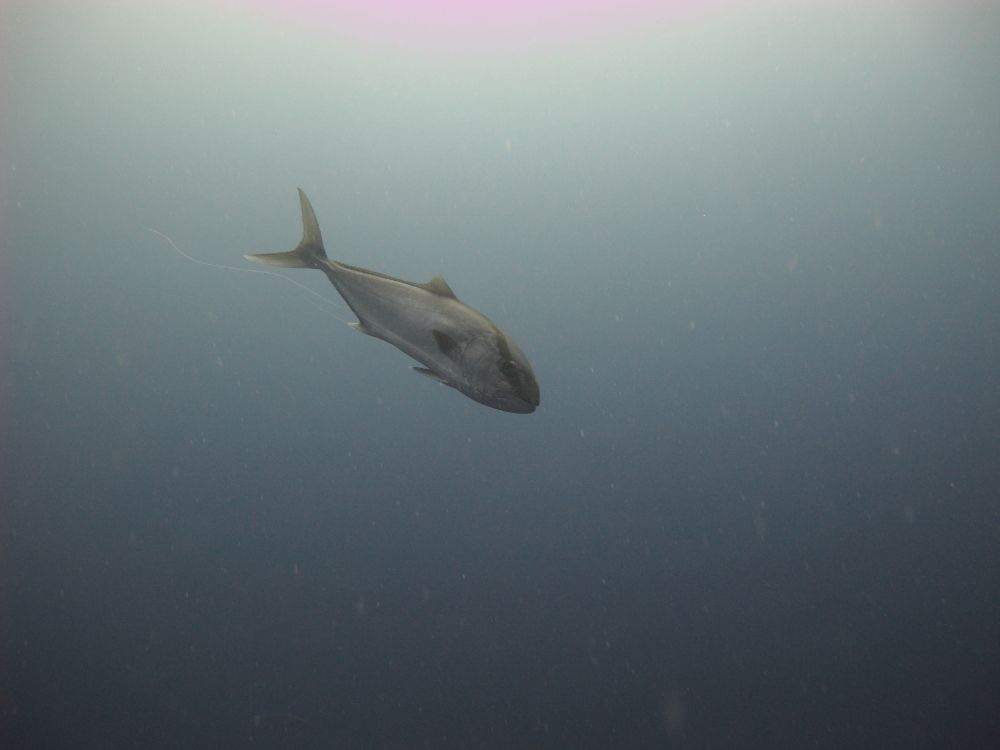
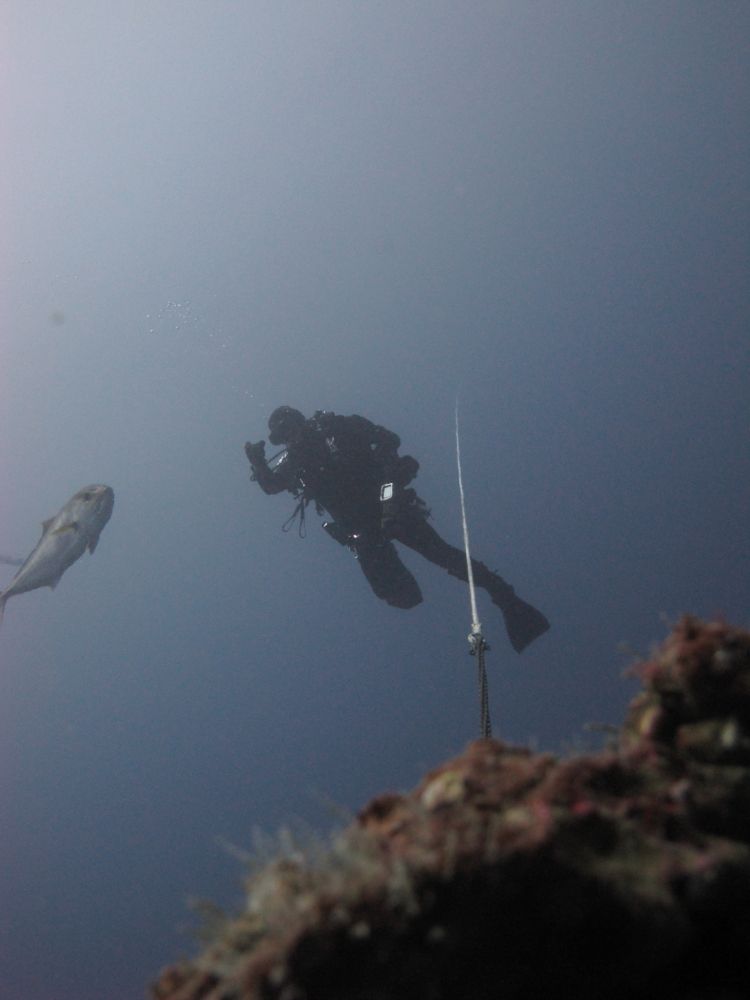

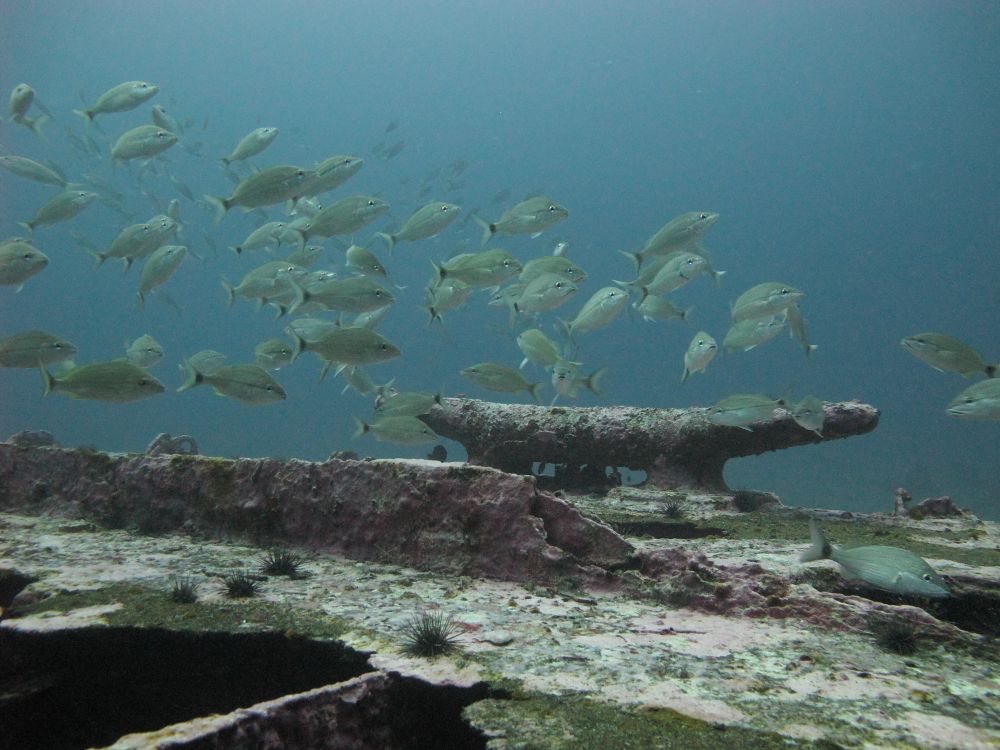
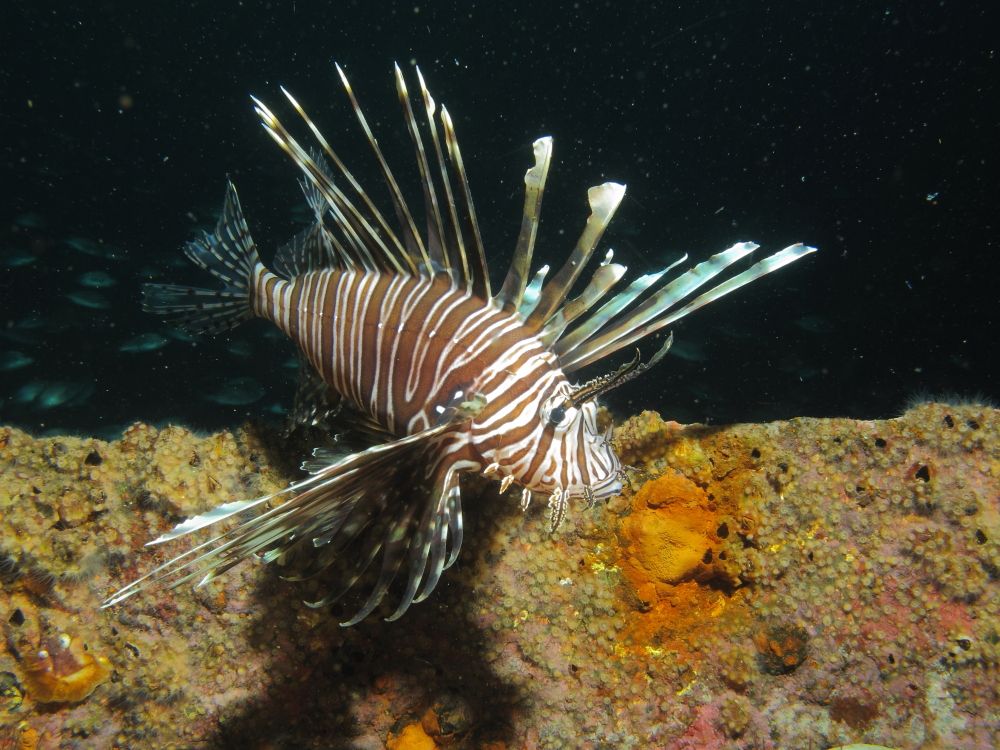
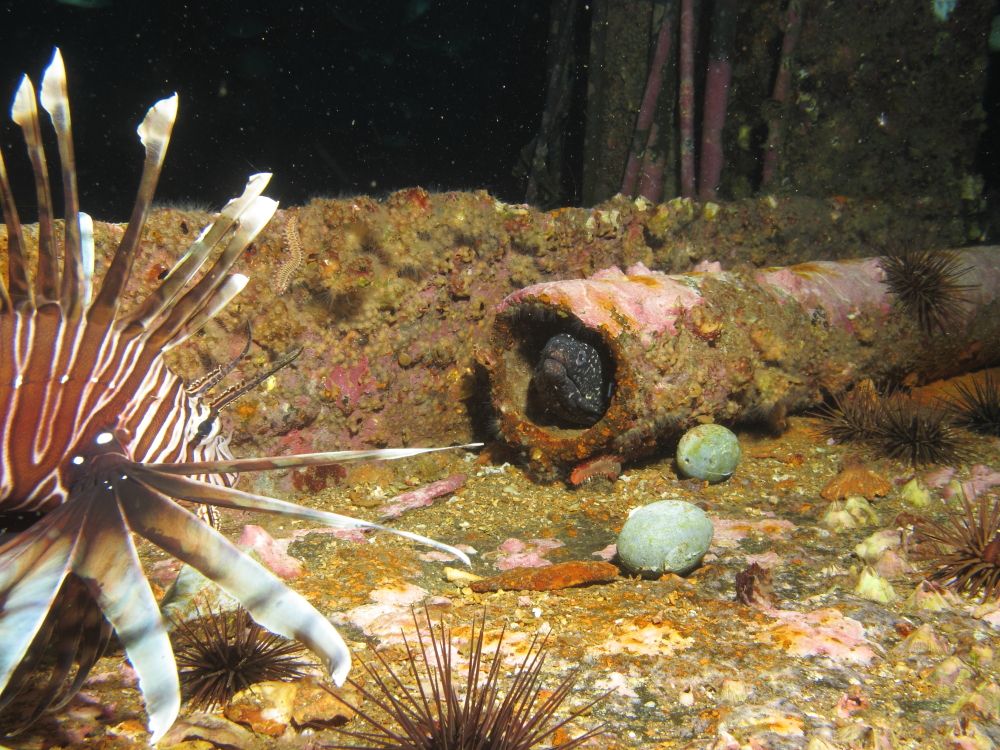
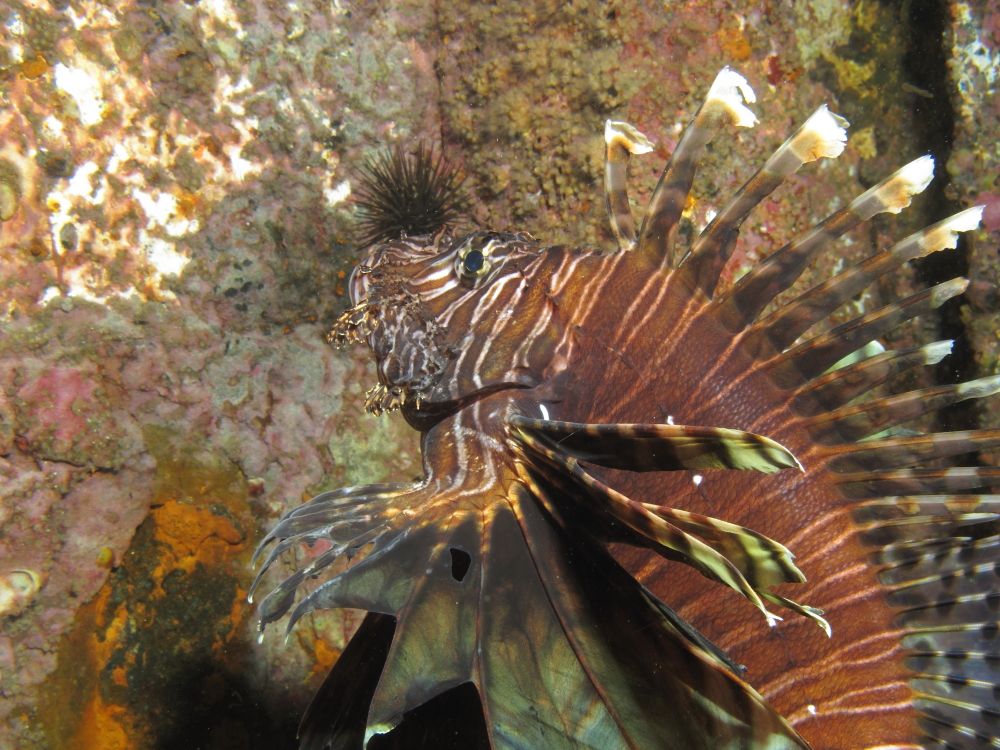
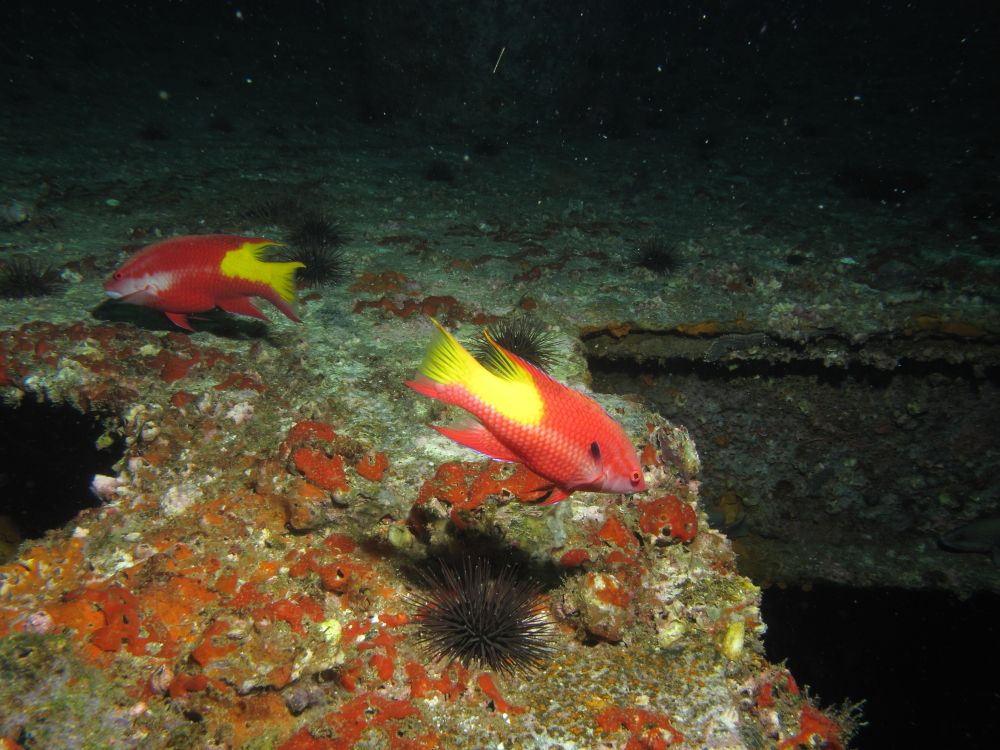
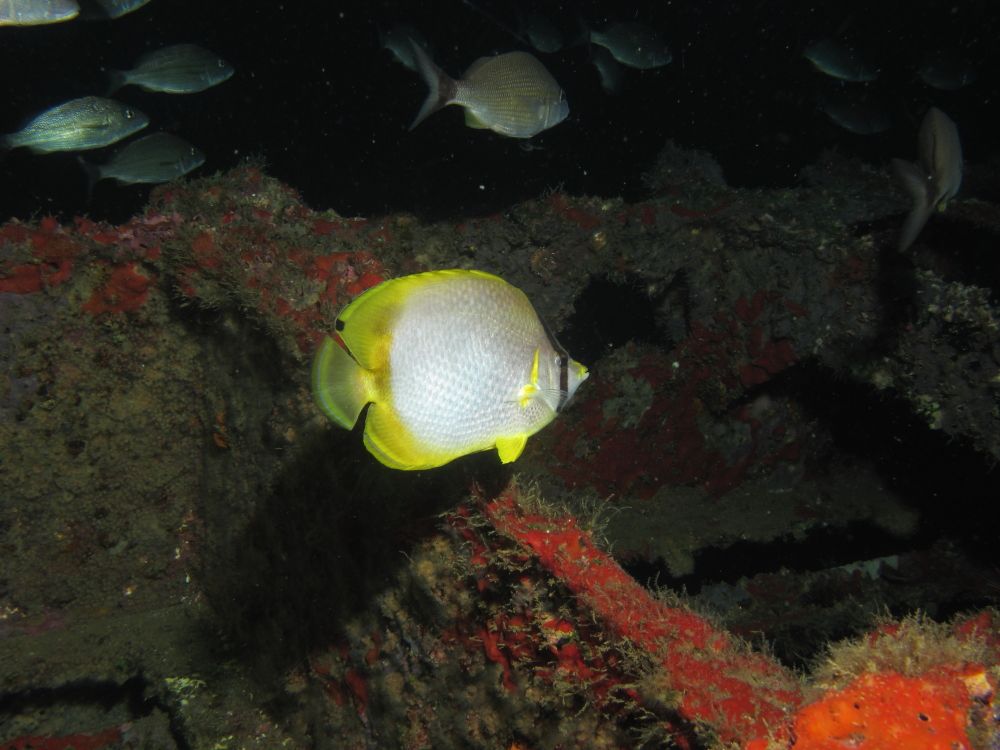
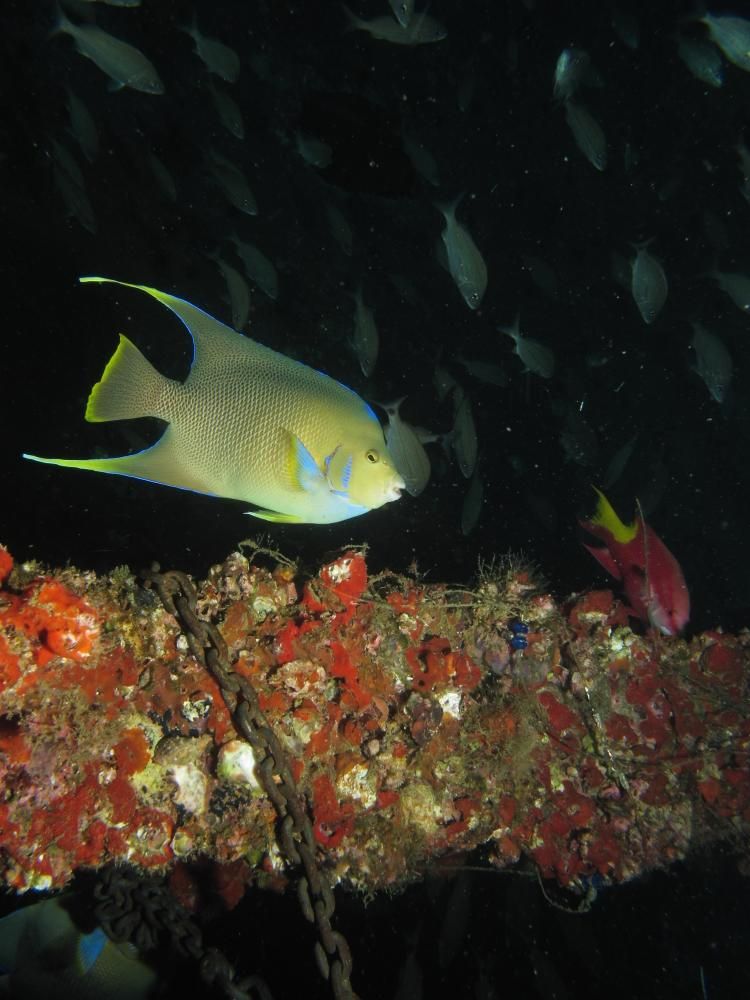
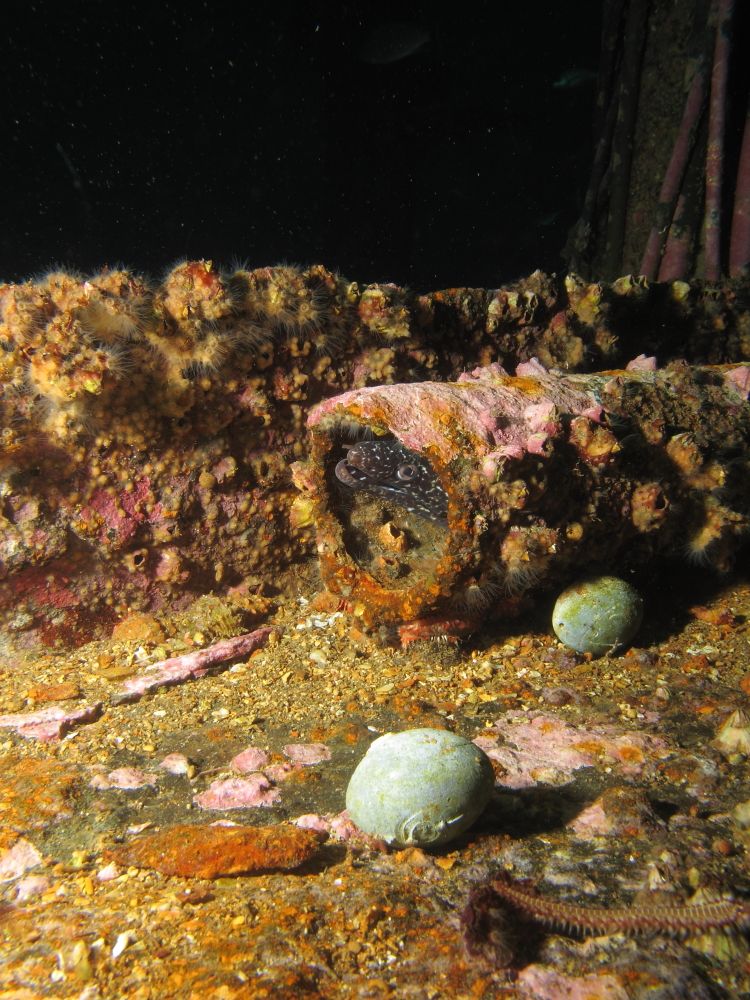
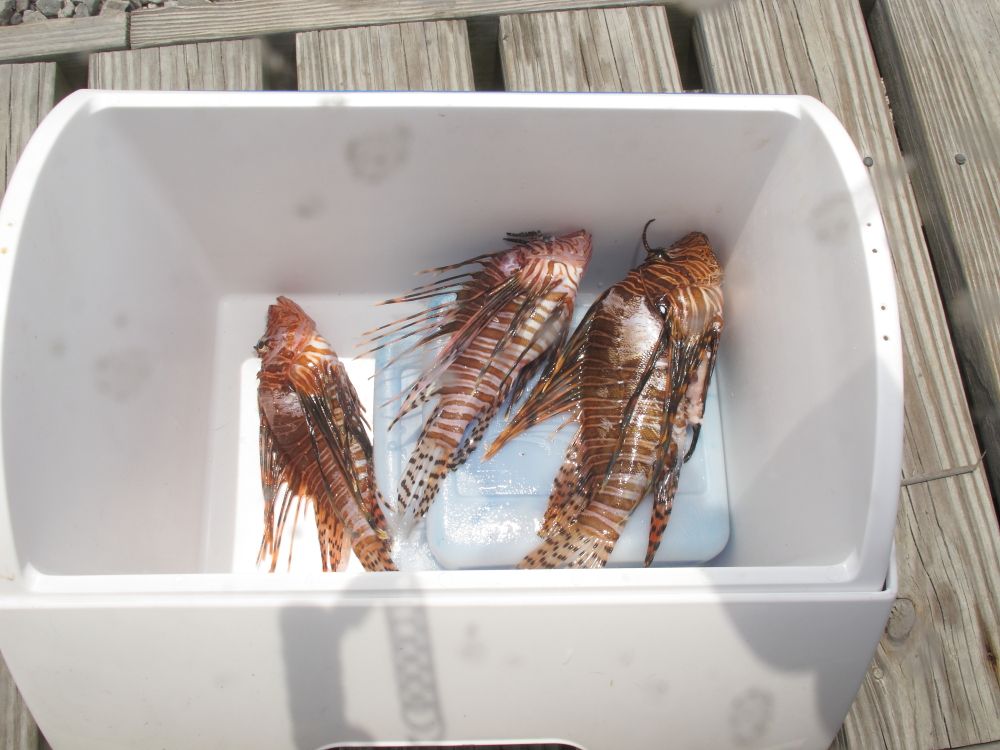
The Avocet is a 247 foot long, 40 foot wide clamshell dredge intentionally sank in May of 1991. There's about 30 feet of vertical relief provided by the upper deck towards the stern, but much of the wreck is only 10 to 15 feet above the sand. There's a notable amount of wreckage to the port amidship, and a crack that spans the width of the hull towards the bow. The crack is about 15 feet wide, and provides an easy escape route for the smarter fish that call the wreck home. Elsewhere you'll find missing deck plates and bulkheads that offer entrance, or inspection ports into the interiors of the vessel.
Once on site, I was saddened to find murky, green water, but after we were tied in, the divemaster reported that 100 foot visibility waited for us below the surface. Once I splashed, I found turbid water, and a swift surface current. These conditions lasted for 30 feet. Once deeper, the current reversed polarity, and the water took on a deep blue color.
As I descended, I could make out the lines of the ship and the susurrus of the billion reef creatures that crusted the hull. I descended further, and noticed the feathery, white-tipped fins of a dozen lionfish.
Out of habit, I checked the tie-in, and found it secure. I then glanced about in search of fish to photograph. I saw damsels, three varieties of butterflyfish, all in pairs, queen and blue angelfish, a small eel, gag grouper, coney, soapfish, spanish hogfish, mangrove snapper, red snapper, and several schools of small baitfish.
The current had dropped off, but was still significant, so I moved upstream at a careful pace, and noted the locations of the lionfish for my second dive. I found the bottom temperature to be 67 degrees, and it felt colder than my previous dives at this location a few weeks before. After I took a few photos, I worked my way back downstream to the ascent line, and made a slow ascent, then safety stop before reboarding.
On deck, I was greeted with fresh-cut pineapple slices and sandwiches. I don't usually eat on boat trips, but I've found it impossible to turn down fresh pineapple, so I had a few slices, and washed it down with a cold water.
After an hour on the surface, I returned with my polespear and lionfish bag. The seas had laid down, and the current on the surface had dropped down a bit. The deeper current had all but disappeared. I managed to poke a few lionfish, and landed three, which carefully went into my bag. I'll confess that there's a learning curve to retaining lionfish without getting stuck. It's certainly easier to kill a lionfish than it is to collect them! I'm used to putting my hands on critters I plan to take home with me, and it's pretty hard to handle a live fish without touching it. I ended up braining two of my fish, but the third one was wrestled into the bag without being dispatched. I couldn't manage to get my short knife past his fins. I'll probably try a shorter spear with a narrow paralyzer tip on my next attempt.
The trip back to Pensacola was fast and pleasant. The weather was perfect, and the seas had laid down to almost nothing.
As always, the captain and crew of the Niuhi were first rate. I'm looking forward to my next offshore dives with them, but I should have new camera gear coming in this week, so I'll probably stick to shore dives this weekend so I can work out the kinks before going deep again.
---------- Post added May 13th, 2013 at 11:48 PM ----------

























